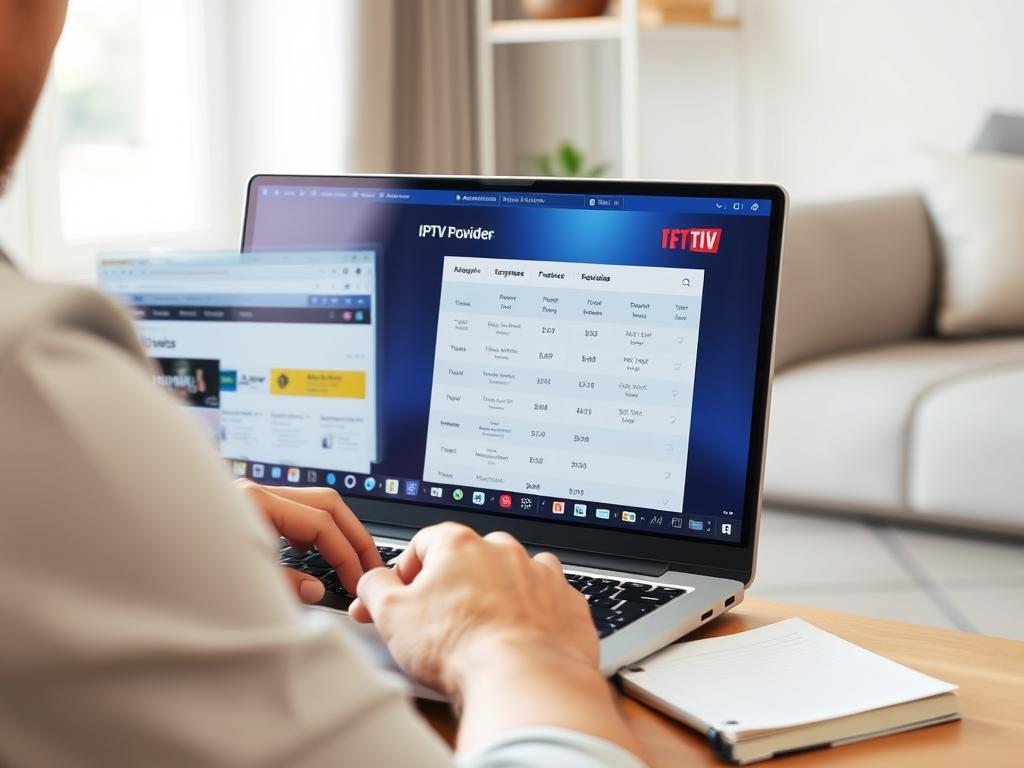Tired of expensive cable bills and limited viewing options? IPTV subscriptions are revolutionizing how we consume television content. Internet Protocol Television (IPTV) delivers TV programming over internet connections rather than through traditional satellite or cable formats, offering unprecedented flexibility and value.
Whether you’re looking to cut the cord completely or simply expand your viewing options, this comprehensive guide will walk you through everything you need to know about IPTV subscriptions – from understanding the technology and selecting the right provider to setting up your system and navigating legal considerations.
What is IPTV and How Does It Work?
IPTV (Internet Protocol Television) is a technology that delivers television content over Internet Protocol (IP) networks. Unlike traditional broadcast methods that push all channels simultaneously, IPTV sends only the requested content to the viewer’s device.
How IPTV Works
IPTV works by breaking down video content into data packets and transmitting them over the internet. When you select a channel or on-demand content, your IPTV provider streams that specific content to your device. This method offers greater flexibility and efficiency compared to traditional cable or satellite systems.
The technology behind IPTV allows for three primary types of content delivery:
- Live TV streaming (similar to traditional broadcast television)
- Time-shifted media (catch-up TV for previously broadcast content)
- Video on Demand (VOD) for movies and shows available anytime
IPTV vs. Traditional Cable/Satellite
IPTV differs fundamentally from traditional cable and satellite services in several key ways:
| Feature | IPTV | Traditional Cable/Satellite |
| Delivery Method | Internet connection | Coaxial cable or satellite dish |
| Content Selection | On-demand, personalized | Fixed channel packages |
| Device Compatibility | Multiple devices | TV with set-top box |
| Cost | Generally lower | Generally higher |
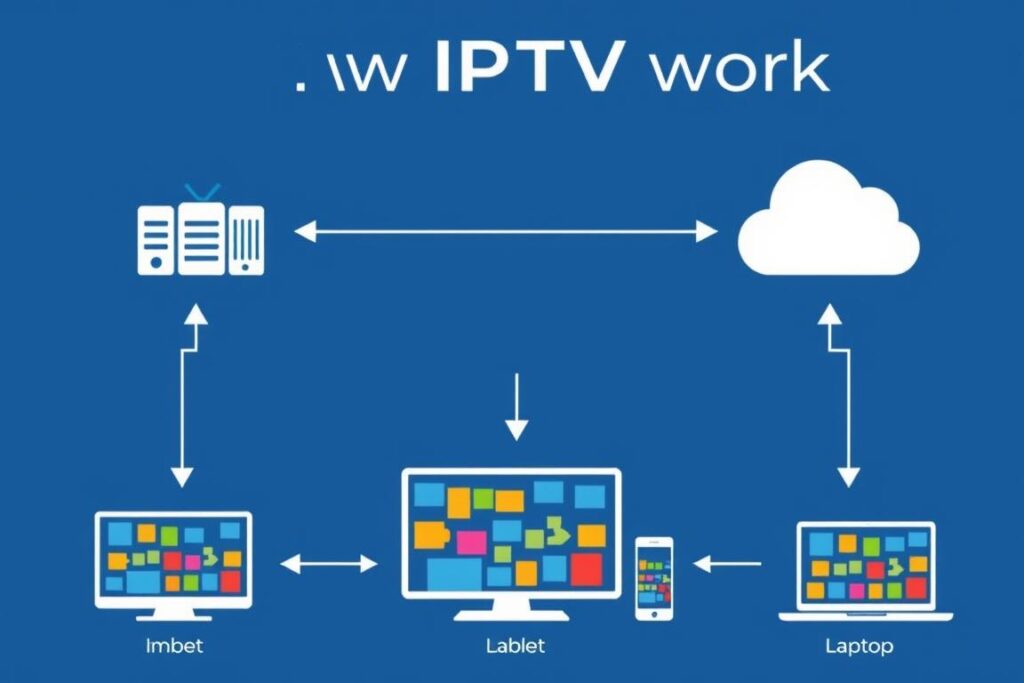
Benefits of IPTV Subscriptions
IPTV services offer numerous advantages over traditional television options, making them increasingly popular among cord-cutters and entertainment enthusiasts alike.
Cost-Effectiveness
IPTV subscriptions typically cost significantly less than traditional cable or satellite packages. With plans starting from as low as $10-15 per month for thousands of channels, the savings can be substantial. Many providers also offer flexible subscription periods, allowing you to pay monthly rather than committing to long-term contracts.
Content Variety
Access thousands of live TV channels from around the world, including sports, news, entertainment, and international programming. Most IPTV services also include extensive video on demand (VOD) libraries with movies and TV shows, giving you more content options than traditional cable packages at a fraction of the cost.
Multi-Device Access
Watch your favorite content on multiple devices simultaneously with a single subscription. Whether you prefer viewing on your smart TV, smartphone, tablet, or computer, IPTV subscriptions offer flexibility in how and where you consume content. Many providers allow 3-5 concurrent connections.
On-Demand Content
Most IPTV services include extensive VOD libraries with thousands of movies and TV shows available at your fingertips. This eliminates the need for separate streaming services in many cases, as you can access both live TV and on-demand content through a single platform.
Advanced Features
Enjoy modern viewing features like electronic program guides (EPG), catch-up TV, recording capabilities, and time-shifting. These features allow you to watch content on your schedule rather than being tied to broadcast times. Some services also offer specialized sports packages and pay-per-view events.
No Special Equipment
Unlike cable or satellite TV that requires professional installation and specialized equipment, IPTV works with devices you likely already own. All you need is a compatible device (smart TV, streaming stick, smartphone, etc.) and a stable internet connection to get started.

Ready to Experience IPTV Benefits?
Most reputable IPTV providers offer free trials so you can test their service before committing. Try a free trial today to see if IPTV is right for your entertainment needs.
IPTV Requirements: What You Need to Get Started
Before subscribing to an IPTV service, ensure you have the necessary components for a smooth streaming experience:
High-Speed Internet Connection
A stable internet connection is the foundation of any IPTV setup. Here are the recommended speeds:
- Standard Definition (SD): At least 3-5 Mbps
- High Definition (HD): At least 10-15 Mbps
- 4K Ultra HD: At least 25 Mbps
To avoid buffering issues, it’s best to have speeds that exceed these minimum requirements, especially if multiple devices will be streaming simultaneously in your household.
Compatible Streaming Device
IPTV services work with a wide range of devices, including:
- Smart TVs (Samsung, LG, Sony, etc.)
- Streaming devices (Amazon Fire Stick, Roku, Apple TV)
- Android TV boxes and NVIDIA Shield
- Smartphones and tablets (iOS and Android)
- Computers (Windows, Mac)
- Gaming consoles (Xbox, PlayStation)
IPTV Player/Application
To access your IPTV subscription, you’ll need an IPTV player or application. Options include:
- TiviMate: Popular Android-based player with advanced features
- IPTV Smarters Pro: User-friendly option for multiple platforms
- GSE Smart IPTV: Good option for iOS users
- Perfect Player: Lightweight player with good performance
- VLC Media Player: Versatile option for basic IPTV viewing
Many IPTV providers also offer their own custom applications that are optimized for their service.
VPN for Security and Access
While not strictly required, a VPN (Virtual Private Network) is highly recommended when using IPTV services for several reasons:
- Protects your privacy by encrypting your internet traffic
- Prevents your ISP from throttling your streaming speeds
- Bypasses geographic restrictions on content
- Adds an extra layer of security when using unverified services
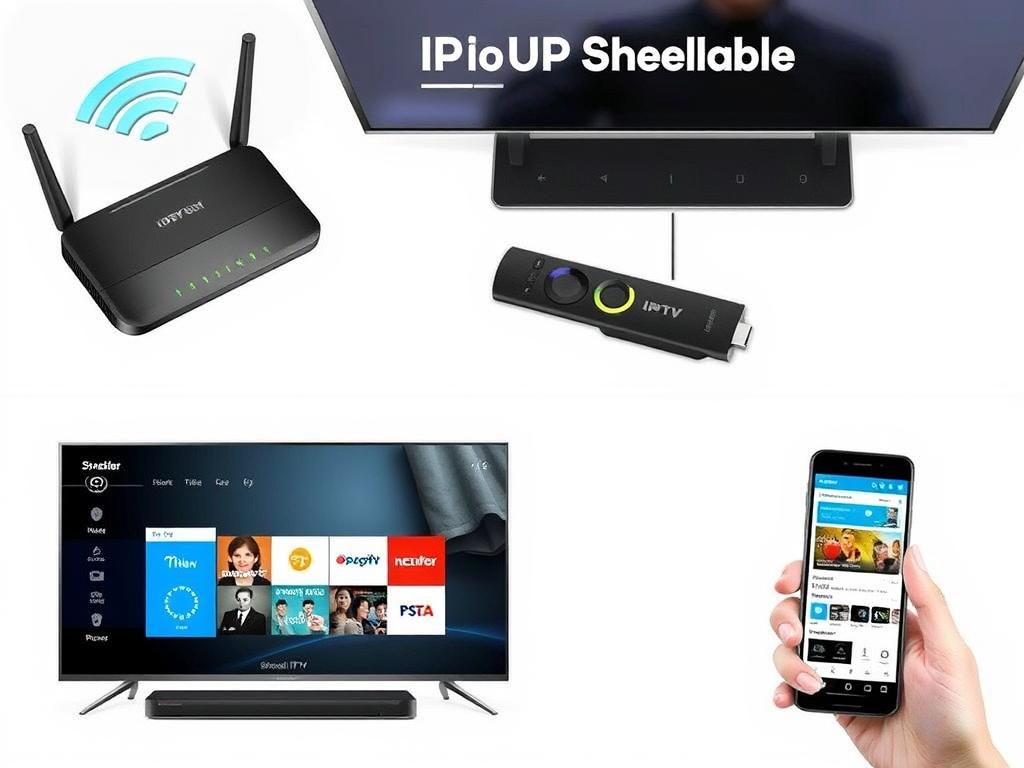
Pro Tip: Before committing to an IPTV subscription, test your internet speed at different times of the day to ensure consistent performance. Many IPTV issues stem from inadequate internet speeds rather than problems with the service itself.
How to Choose the Best IPTV Provider
With thousands of IPTV providers available, selecting the right one can be overwhelming. Here are the key factors to consider when evaluating IPTV subscriptions:
Content Selection
The primary consideration for most users is the channel lineup and on-demand content library. Look for:
- Variety of channels in categories you enjoy (sports, movies, news, etc.)
- Local channels availability for your region
- International channels if you watch content from other countries
- Size and quality of the VOD library
- PPV (Pay-Per-View) events coverage if you follow sports
Streaming Quality
Video quality significantly impacts your viewing experience:
- HD and 4K channel availability
- Stream stability and buffering frequency
- FPS (frames per second) for sports content
- Audio quality and surround sound options
Reliability and Uptime
A service with extensive channels means nothing if it’s frequently down:
- Server reliability and uptime percentage
- Performance during peak viewing hours
- Speed of channel loading and switching
- Frequency of maintenance periods
Device Compatibility
Ensure the service works with your preferred viewing devices:
- Compatibility with your streaming devices (Firestick, Android, iOS, etc.)
- Availability of dedicated apps or support for third-party players
- M3U URL support for flexible setup options
- Maximum number of simultaneous connections allowed
Pricing and Value
Compare costs and what you get for your money:
- Monthly subscription cost vs. features offered
- Availability of different subscription tiers
- Discounts for longer subscription periods
- Free trial availability to test before purchasing
- Refund policy if the service doesn’t meet expectations
Customer Support
Good support is crucial, especially for technical services:
- 24/7 support availability
- Multiple contact methods (chat, email, phone)
- Response time to inquiries
- Quality of setup guides and documentation
- Community forums or user groups

Top IPTV Subscription Categories
- Available in official app stores
- 100% legal content licensing
- Higher price point ($40-85/month)
- Fewer channels (50-200 typically)
- Excellent reliability and support
- Examples: YouTube TV, Hulu Live, Sling TV
Verified Legal Services
- Not in official app stores
- Extensive channel lineups (10,000+)
- Large VOD libraries
- Mid-range pricing ($15-25/month)
- Good reliability with occasional issues
- VPN recommended for security
Premium Unverified Services
- Not in official app stores
- Moderate channel selection (5,000+)
- Basic VOD offerings
- Low pricing ($5-15/month)
- Variable reliability and quality
- Limited customer support
Budget Services
Protect Your IPTV Experience
When using IPTV services, especially unverified ones, a VPN is essential for privacy and security. It also helps prevent ISP throttling for smoother streaming.
Legal and Safety Considerations for IPTV Subscriptions
Understanding the legal landscape around IPTV services is crucial before subscribing. The legality of IPTV varies by country and depends largely on the specific service and how it licenses its content.
Legal vs. Unverified Services
IPTV services generally fall into two categories:
Verified Legal Services
- Available in official app stores (Amazon, Google Play)
- Properly licensed content from broadcasters
- Examples: YouTube TV, Hulu Live TV, Sling TV, fuboTV
- Higher cost but complete legal compliance
- No legal risks for subscribers
Unverified Services
- Not available in official app stores
- Unclear licensing status for content
- Require side-loading or third-party applications
- Lower cost but potential legal gray areas
- May operate in regulatory gaps between countries
Regional Legal Variations
The legality of IPTV services varies significantly by country:
- United States: Streaming unlicensed content may violate copyright laws
- European Union: Stricter regulations with the Digital Single Market directive
- United Kingdom: Digital Economy Act addresses illegal streaming
- Canada: Copyright Modernization Act applies to digital content
- Australia: Copyright Amendment (Online Infringement) Act targets illegal services
Safety Precautions
When using IPTV services, especially unverified ones, consider these safety measures:
- Use a VPN: Encrypts your connection and masks your IP address
- Research providers: Check reviews and community feedback before subscribing
- Payment security: Use PayPal or cryptocurrency instead of direct credit card payments
- Dedicated device: Consider using a separate device for IPTV to isolate potential security risks
- Anonymous email: Use a separate email address for IPTV subscriptions
Important: This article provides general information and not legal advice. Laws regarding IPTV vary by jurisdiction and change frequently. Always research the specific regulations in your country before subscribing to any IPTV service.
ISP Considerations
Internet Service Providers (ISPs) may impact your IPTV experience:
- Some ISPs throttle streaming traffic, affecting IPTV performance
- ISPs may block access to certain IPTV services
- VPN usage can help bypass ISP restrictions and throttling
- Check your ISP’s terms of service regarding streaming content

Step-by-Step IPTV Setup Guide
Setting up an IPTV subscription is generally straightforward, though the exact process varies depending on your device. Here’s a comprehensive guide to get you started:
1. Choose and Subscribe to an IPTV Service
- Research providers based on the criteria discussed earlier
- Take advantage of free trials when available
- Select a subscription plan that fits your needs
- Complete the payment process
- Receive your login credentials or M3U URL via email
2. Select and Install an IPTV Player
- Choose a compatible IPTV player for your device
- Download from the appropriate app store or website
- Install the application following on-screen instructions
- Open the application once installation is complete
- Some providers offer their own custom applications
3. Configure Your IPTV Player
- Enter your provider’s credentials or M3U URL
- Allow the player to load the channel list and EPG
- Adjust video quality settings if needed
- Organize favorites and create custom channel groups
- Test several channels to ensure proper functioning
Device-Specific Setup Instructions
Amazon Fire TV Stick Setup
- From the Fire TV home screen, go to Settings > Device
- Select “Developer options” and enable “Apps from Unknown Sources”
- Install the Downloader app from the Amazon App Store
- Use Downloader to install your preferred IPTV player (e.g., IPTV Smarters Pro)
- Open the IPTV player and enter your subscription details
- For better performance, consider installing TiviMate from the Amazon App Store
Android TV/Box Setup
- Go to Settings > Security and enable “Unknown Sources”
- Download your preferred IPTV player APK file
- Install the APK using a file manager
- Open the app and enter your subscription credentials
- Configure EPG and other settings as needed
Smart TV Setup (Samsung, LG)
- Access your TV’s app store
- Search for and install a compatible IPTV player
- For Samsung TVs, Smart IPTV (SIPTV) is a popular option
- For LG TVs, SS IPTV is commonly used
- Open the installed app and follow on-screen instructions to add your playlist
- Some TVs may require MAC address registration with your provider
iOS (iPhone/iPad) Setup
- Download an IPTV player from the App Store (GSE Smart IPTV, IPTV Smarters)
- Open the app and select “Add Playlist”
- Enter your M3U URL or Xtream Codes login details
- Allow the app to load your channel list
- Note that iOS has more restrictions for IPTV apps than Android

Tip: Many IPTV providers offer detailed setup guides specific to their service. Always check their website or contact customer support for the most accurate setup instructions.
Troubleshooting Common IPTV Issues
Even with the best IPTV subscriptions, you may occasionally encounter technical issues. Here are solutions to the most common problems:
Buffering and Playback Issues
Problem: Constant Buffering
Few things are more frustrating than a stream that keeps pausing to buffer. Try these fixes:
- Check your internet speed: Run a speed test to ensure you have adequate bandwidth
- Reduce active connections: Limit the number of devices using your network
- Use a wired connection: Ethernet is more stable than WiFi
- Adjust video quality: Lower the resolution in your IPTV player settings
- Try a VPN: Some ISPs throttle streaming traffic; a VPN can bypass this
- Restart your router: This can resolve temporary network issues
Problem: Channels Not Loading
If channels won’t load or show error messages:
- Verify your subscription: Check that your account is active
- Update your playlist: Refresh your M3U URL or playlist
- Try different servers: Some providers offer multiple server options
- Clear cache: Remove temporary files from your IPTV application
- Reinstall the app: Sometimes a fresh installation resolves issues
EPG and Interface Issues
Problem: Missing or Incorrect EPG
The electronic program guide (EPG) enhances your viewing experience:
- Update EPG URL: Ensure you’re using the correct EPG source
- Adjust time settings: Match your device time zone with the EPG
- Allow loading time: EPG data can take time to fully populate
- Try alternative EPG sources: Some players allow multiple EPG sources
Problem: Payment and Account Issues
For subscription and payment concerns:
- Payment verification: Ensure your payment was processed successfully
- Account activation: Some services require manual activation after payment
- Credential accuracy: Double-check username and password for typos
- Contact support: Reach out to your provider’s customer service
- Payment security: Use PayPal or cryptocurrency for better protection
“Most IPTV issues can be resolved with basic troubleshooting. Always start with the simplest solutions like checking your internet connection and restarting your device before assuming there’s a problem with the service itself.”

Future Trends in IPTV Subscriptions
The IPTV landscape continues to evolve rapidly. Here are some emerging trends to watch:
4K and 8K Streaming
As internet speeds increase globally, more IPTV providers are offering 4K content, with 8K on the horizon. This ultra-high-definition content delivers stunning visual quality for sports, movies, and nature programming. Expect more providers to expand their 4K libraries and begin testing 8K streams in the coming years.
AI-Powered Recommendations
Artificial intelligence is revolutionizing content discovery in IPTV platforms. Advanced algorithms analyze viewing habits to suggest relevant channels and programs, creating a more personalized experience. This technology will continue to improve, making it easier to find content you’ll enjoy among thousands of options.
Integration with Smart Home
IPTV services are increasingly integrating with smart home ecosystems. Voice control through assistants like Alexa, Google Assistant, and Siri is becoming standard. Future developments will likely include deeper integration with other smart home devices, such as automatic content pausing when doorbell cameras detect visitors.
Hybrid Models
The line between traditional broadcasters and IPTV providers is blurring. Many cable and satellite companies now offer their own IPTV solutions, while streaming services are adding live TV options. This convergence will likely continue, giving consumers more flexible options that combine the best of both worlds.
Enhanced Interactive Features
Interactive elements like multi-angle viewing for sports, real-time statistics, and social media integration are becoming more common. These features transform passive viewing into an interactive experience. Future developments may include augmented reality elements and more sophisticated interactive options.
Improved Legal Frameworks
As IPTV continues to grow in popularity, expect more comprehensive legal frameworks to emerge. This will likely include clearer regulations for providers and increased options for legally licensed content. These developments should ultimately benefit consumers by creating a more stable and reliable IPTV ecosystem.
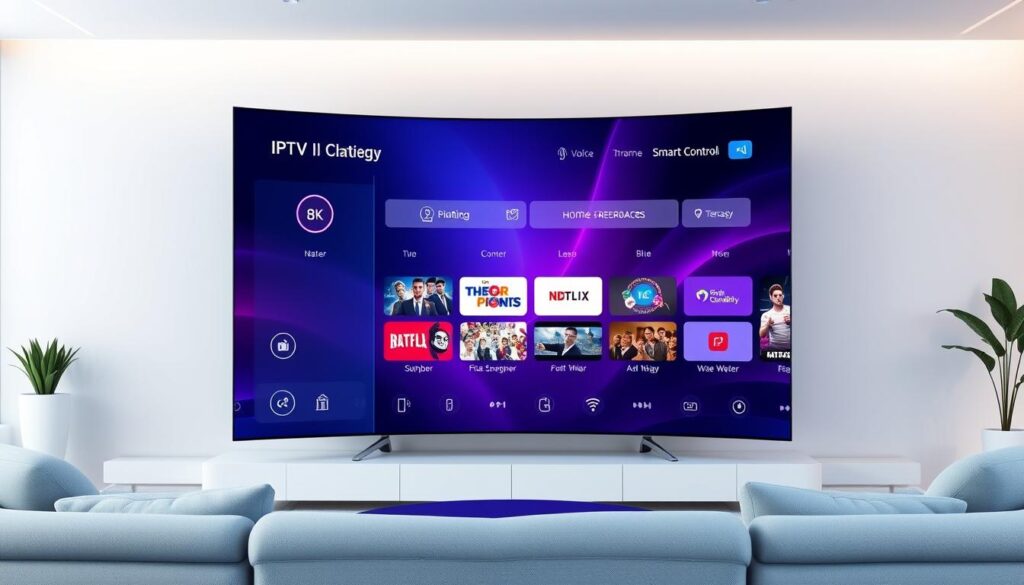
IPTV Glossary: Key Terms to Know
Understanding the terminology associated with IPTV subscriptions will help you navigate the technology more effectively:
Technical Terms
- M3U URL
- A playlist format used by IPTV providers to deliver channel lists to players.
- EPG (Electronic Program Guide)
- A digital guide showing scheduled programs with times and descriptions, similar to traditional TV guides.
- Xtream Codes
- A popular IPTV panel system that uses username/password authentication instead of M3U URLs.
- VOD (Video On Demand)
- Content available to watch anytime, not tied to a broadcast schedule.
- Catch-up TV
- Feature allowing viewers to watch recently aired programs they missed, typically available for a limited time.
- MAG Device
- Specialized set-top boxes designed specifically for IPTV services.
Service Features
- Multi-connections
- The number of devices that can simultaneously use one IPTV subscription.
- PPV (Pay-Per-View)
- Special events, typically sports, that require additional payment to watch.
- Buffer Size
- The amount of data temporarily stored before playback, affecting streaming smoothness.
- Bitrate
- The amount of data transferred per second, affecting video quality and smoothness.
- IP Location Lock
- Restriction that limits service use to the geographic location where it was first activated.
- Custom APK
- Proprietary Android application provided by some IPTV services for optimized viewing.
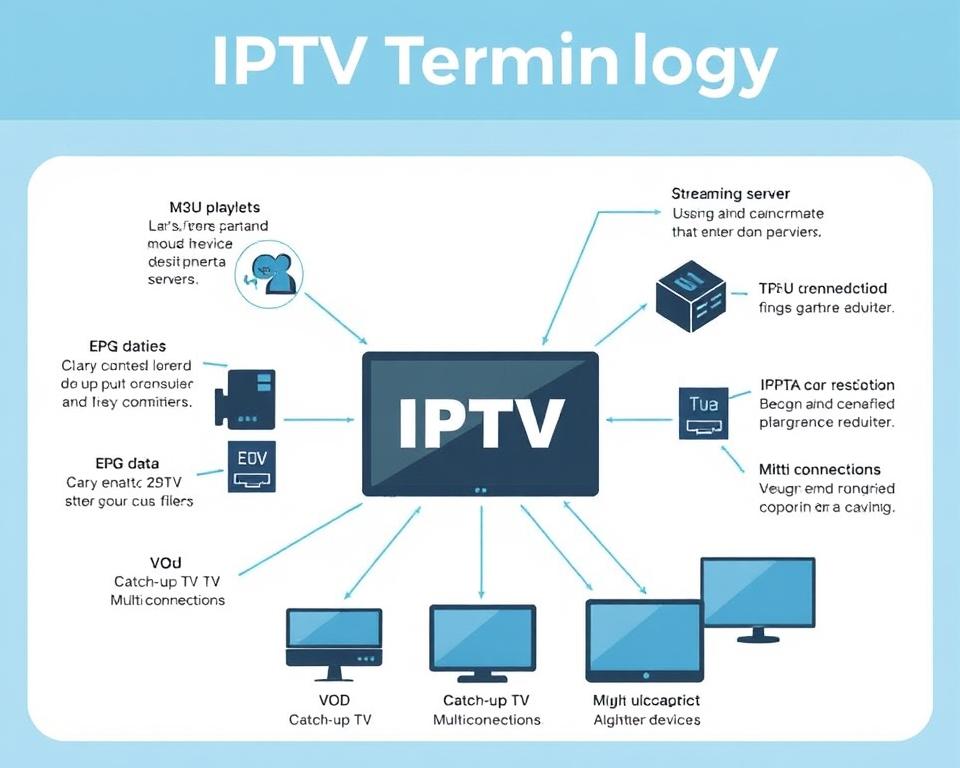
Conclusion: Is an IPTV Subscription Right for You?
IPTV subscriptions offer a compelling alternative to traditional cable and satellite services, providing greater flexibility, content variety, and cost savings. As we’ve explored throughout this guide, these services deliver television content over internet connections, allowing you to watch what you want, when you want, on your preferred devices.
The key benefits of IPTV subscriptions include:
- Significant cost savings compared to traditional cable packages
- Access to thousands of channels from around the world
- Extensive on-demand content libraries
- Multi-device viewing capabilities
- Advanced features like catch-up TV and electronic program guides
However, IPTV isn’t without considerations. The legal status varies by provider and region, technical issues can occur, and quality can vary between services. When choosing an IPTV subscription, carefully research providers, take advantage of free trials, and consider using a VPN for added security and privacy.
As the technology continues to evolve with 4K streaming, AI recommendations, and smart home integration, IPTV is likely to become an even more attractive option for entertainment consumers worldwide.
Before subscribing to any IPTV service, we recommend researching the specific laws in your country regarding IPTV usage and choosing providers that align with those regulations. With the right setup and provider, an IPTV subscription can transform your television viewing experience while delivering substantial savings.
Ready to Explore IPTV Options?
Most reputable IPTV providers offer free trials so you can test their service before committing. Remember to check local regulations before subscribing to any service.
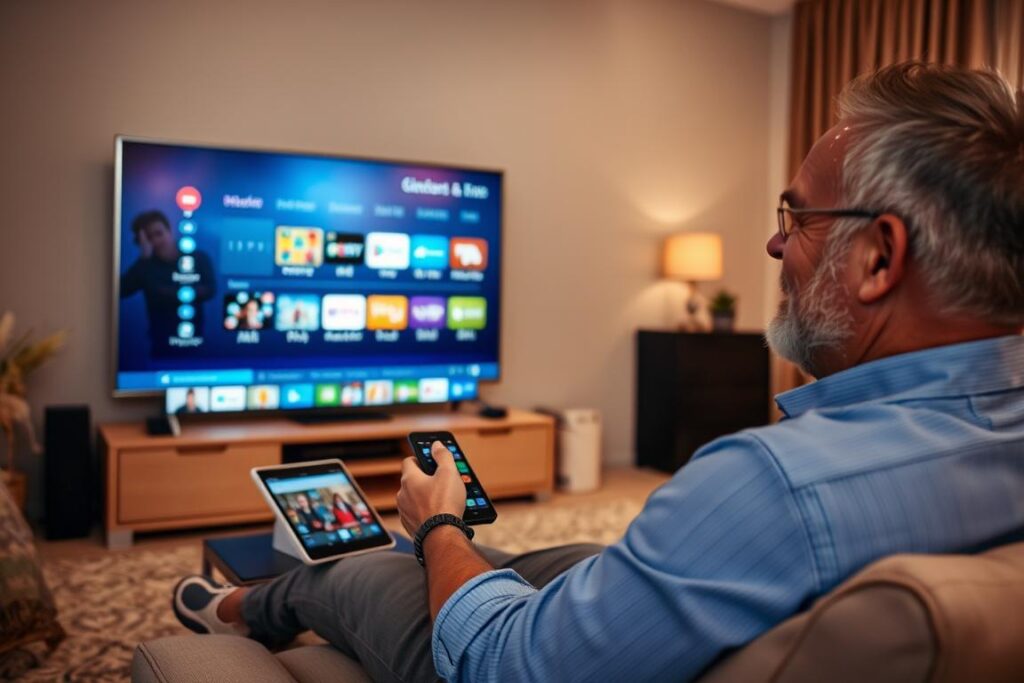
Frequently Asked Questions About IPTV Subscriptions
What’s the difference between IPTV and regular streaming services like Netflix?
While both deliver content over the internet, IPTV services focus primarily on live TV channels similar to traditional cable packages, often including hundreds or thousands of live channels from around the world. Streaming services like Netflix offer on-demand content libraries without live programming. Many IPTV services also include VOD libraries, essentially combining both types of content in one platform.
How much internet speed do I need for IPTV?
For standard definition content, at least 3-5 Mbps is recommended. For HD content, aim for 10-15 Mbps minimum. For 4K streaming, you’ll need at least 25 Mbps. If multiple devices will be streaming simultaneously in your household, you’ll need to account for their combined bandwidth requirements. For the best experience, we recommend having speeds that exceed these minimums to avoid buffering issues.
Are all IPTV services legal?
No. IPTV services fall into two main categories: verified services that properly license their content (like YouTube TV, Hulu Live TV) and unverified services with unclear licensing status. Verified services are typically available in official app stores and charge higher subscription fees to cover content licensing costs. The legality of unverified services varies by country and depends on how they source their content. Always research the legal status of IPTV services in your region before subscribing.
Why should I use a VPN with IPTV?
A VPN (Virtual Private Network) provides several benefits when using IPTV services: it encrypts your internet traffic for privacy, prevents your ISP from throttling your streaming speeds, bypasses geographic restrictions on content, and adds an extra layer of security when using unverified services. While not strictly required, a VPN is highly recommended, especially for unverified IPTV services.
What devices can I use to watch IPTV?
IPTV is compatible with a wide range of devices, including smart TVs (Samsung, LG, Sony), streaming devices (Amazon Fire Stick, Roku, Apple TV), Android TV boxes, smartphones and tablets (iOS and Android), computers (Windows, Mac), and even gaming consoles (Xbox, PlayStation). The specific compatibility depends on the IPTV service and available applications.
How do I choose between M3U and Xtream Codes for my IPTV setup?
Both M3U and Xtream Codes are methods for accessing IPTV content. M3U is a playlist format that contains direct links to streams, while Xtream Codes uses a portal system with username/password authentication. Xtream Codes generally offers more features like easier EPG integration and VOD access, while M3U is more widely compatible with different players. Many providers offer both options, so you can choose based on your preferred player and device.
